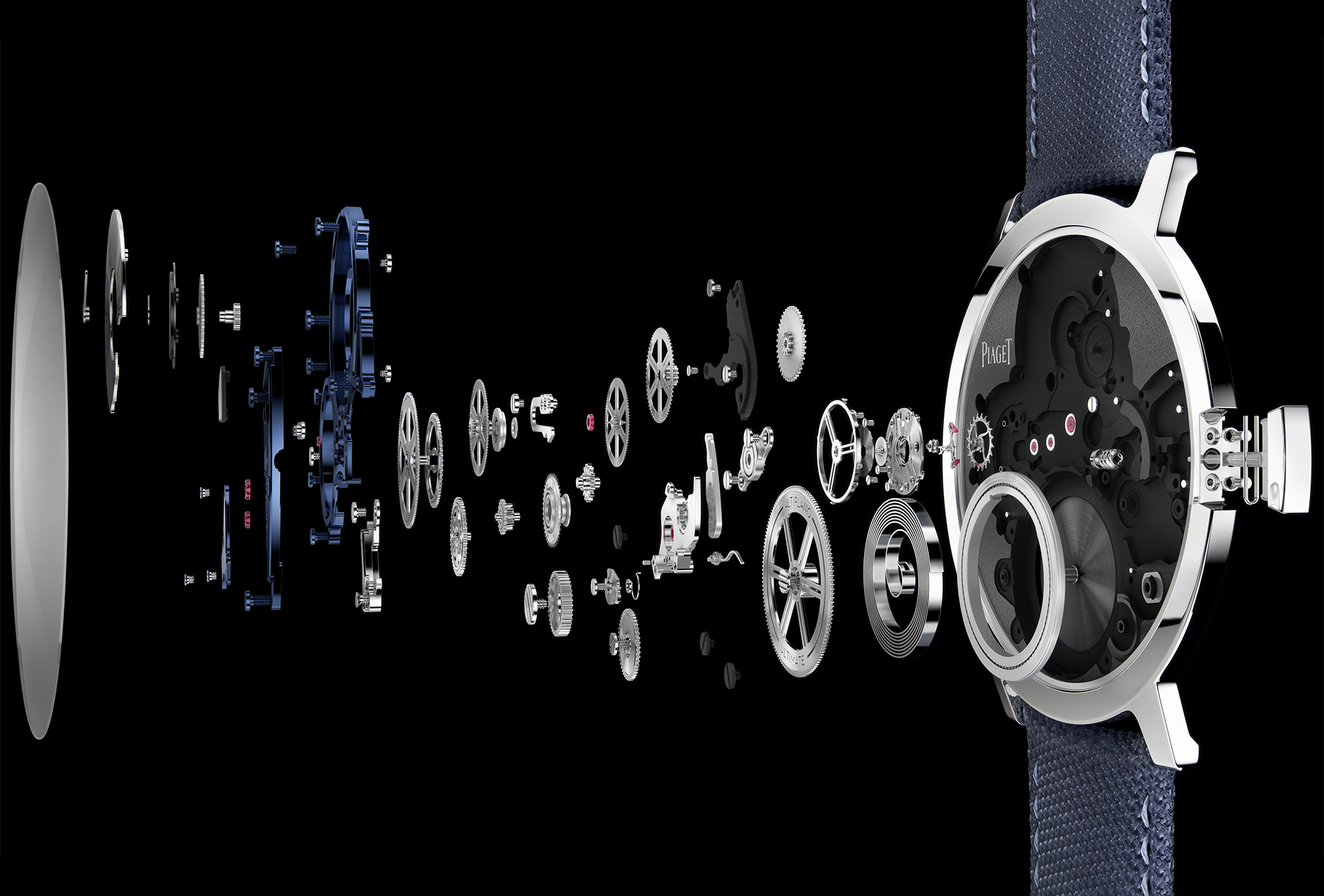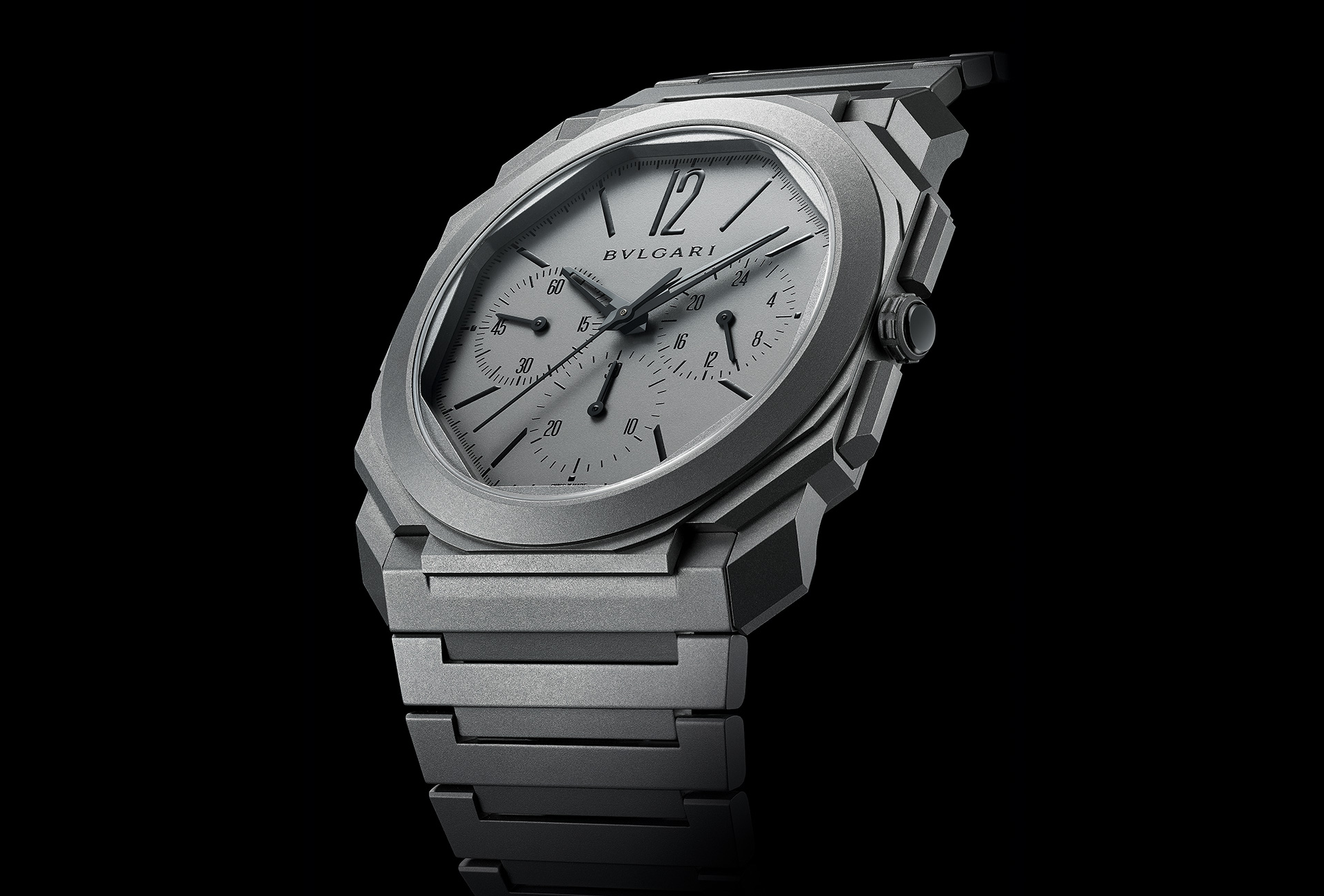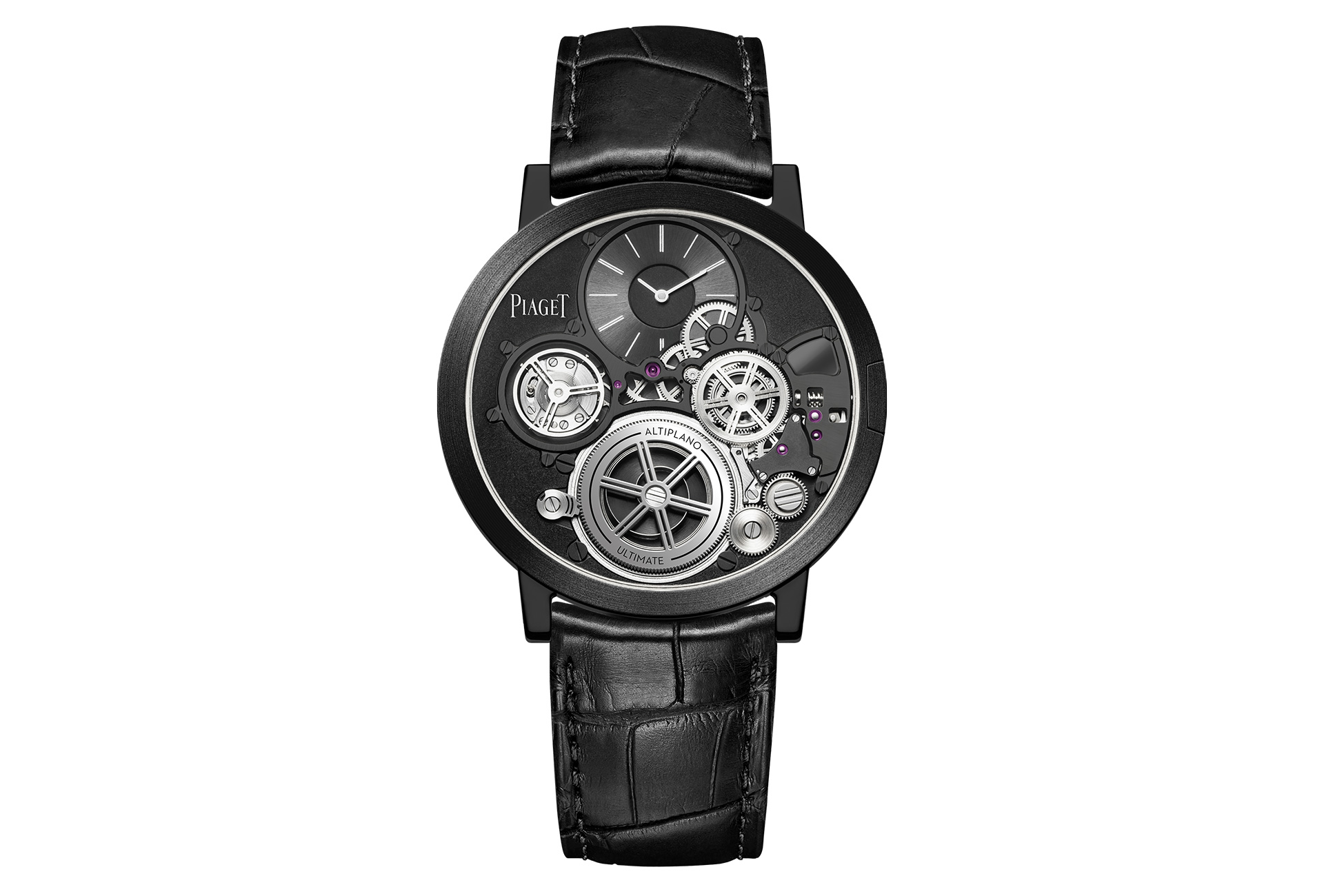Has Piaget had the final word with its Altiplano Ultimate Concept? After a fiercely contended battle with Bulgari that began in 2013, the latest offering from the Geneva brand is, without contest, the thinnest mechanical watch ever made. At a paper-thin 2mm high, this truly remarkable timepiece debuted in 2018 as a prototype that left the vast majority of observers dubious as to whether such a technically complex watch could be commercially produced and, if it were, would it be practical for daily use? Yes, answered Piaget, and to prove it the Altiplano Ultimate Concept is now available to customers in three versions, with personalisation options allowing no fewer than 10,000 permutations.
Six years in development
Bringing the watch to market meant further research and development on top of the four years that went into the initial proof-of-concept watch. Piaget has built on a principle it unveiled in 2014 on the manually-wound Altiplano 900P, whose total height of 3.65mm set a first record. This principle was, ingeniously, to fuse case and movement so that the back of the case doubles up as the mainplate for the components. The Altiplano Ultimate Concept, also manually-wound, uses the same “lay-out” but with a number of modifications, introduced on the 2018 execution. First off, the sapphire crystal has been slimmed down from 1mm to 0.2mm thick. The barrel, which has no drum, is mounted on ceramic ball bearings and provides a comfortable 40 hours of power reserve. A recessed telescopic crown sits flush with the case middle and connects to a worm screw. The off-centre hours and minutes dial is protected by the same circular bridge that surrounds the regulator. For the case, a cobalt-based alloy guarantees the strength of the 0.12mm “skin” between the movement and the wrist.
This latest exploit clearly establishes Piaget as the “king of extra-thin” – a title the brand first claimed in 1957 with the introduction of the 9P, a manual-winding movement measuring 2.00mm high, followed three years later by the automatic 12P calibre (2.30mm). Both are still regularly cited as examples of elegance in watchmaking. Piaget would, however, come up against a serious pretender to the throne – from unexpected quarters. In 2013 Bulgari showed it meant business with the launch of the Octo Steel whose automatic movement, the BVL 193, was an impressively slim 3.70mm high. Not bad for starters but nothing to worry Piaget which, also in 2013, took the wraps off the Altiplano Date. Its 1205P automatic movement measured 3.00mm thick inside a 6.35mm case. A year later Bulgari introduced the Octo Finissimo line and the gloves were off. The Italian firm snatched five records in six consecutive years and still holds the title for thinnest automatic chronograph with GMT (Calibre BVL 318 – 3.30mm), thinnest manual-winding minute repeater (Calibre BVL 362 – 3.12mm) and thinnest automatic tourbillon (Calibre BVL 288 – 1.95mm).
First-class challengers
Automatic or manual-winding, Piaget and its “all-in-one” concept has the upper hand in the hours and minutes category thanks to the 4.30 millimetres of the Altiplano Ultimate Automatic, released in 2018, and the 2.00 millimetres of the Altiplano Ultimate Concept. Bulgari remains hot on its heels nonetheless, courtesy of the manual-winding Finissimo (2.23mm/5.00mm case) and the automatic BVL 138 (2.23mm/5.15mm case) which beat Piaget’s 1200P (2.35mm). Where to put the achingly thin 3.95 millimetres of the Bulgari Octo Finissimo Tourbillon Automatic (Calibre BVL 288 – 1.95mm) – automatic watch or tourbillon watch – is not for us to decide. Either way, Bulgari and Piaget have left other manufacturers with little more than crumbs. Special mention goes to Audemars Piguet whose Royal Oak Self-Winding Perpetual Calendar Ultra-Thin (Calibre 5133 – 2.89mm/6.30mm case) holds the world’s-thinnest record in its category and took the Aiguille d’Or prize at the 2019 Grand Prix d’Horlogerie de Genève.
Other contenders are no less impressive. Think of the Breguet Classique Tourbillon Extra-Plat 5367 Automatique from 2018 (Calibre 581 – 3.00mm/7.45mm case) or the Patrimony Contemporaine Ultra-Thin from Vacheron Constantin, the thinnest manual-winding minute repeater at the time of its launch in 2013 (Calibre 1731 – 3.90mm/8.10mm case). Equally discreet are the Jaeger-LeCoultre Master Ultra Thin Date (Calibre 899/1 – 3.30mm/7.80mm case) and Chopard’s L.U.C XP (Calibre LUC 96-53-L – 3.30mm/7.20mm case), both with automatic winding. This time, though, it seems Piaget has its crown well and truly secured. It’s hard to see how any more microns could be shaved off components when, as with the Altiplano Ultimate Concept, the smallest wheel has already been whittled down to 0.12 millimetres. Does this mean ultra-thin has reached its limit? Any attempts to go further along this road would likely come up against the physical limits of a mechanical watch, assuming it is still intended to give the time. But as history has shown us over and over again, impossible isn’t always part of watchmaking vocabulary.




















